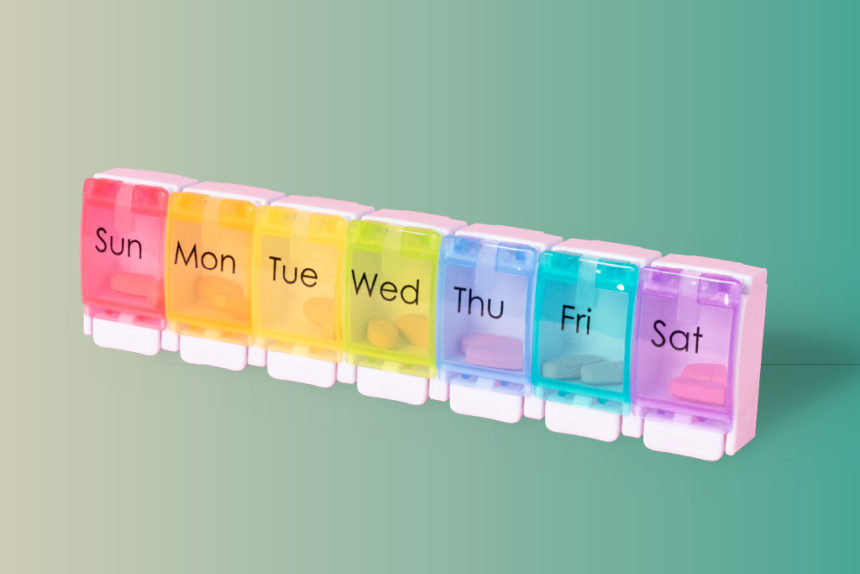A year ago, we could barely pronounce its name. Now we’re proclaiming Comirnaty king.
The $36.8 billion in 2021 revenues Pfizer reported this week for its COVID-19 vaccine set a new single-year pharmaceutical product sales record. AbbVie’s Humira came in a distant second, with $20.7 billion in 2021 revenue.
As for 2022, the drugmaker expects to generate a whopping $100 billion in total revenue, which would set an all-time high not only for Pfizer but for any drugmaker. Of that, Pfizer expects that the Comirnaty shot, which it co-developed with BioNTech, will bring in $32 billion in sales. Its COVID antiviral Paxlovid could add another $22 billion.
The historic revenues are a sign Pfizer is annualizing its pandemic boost. It’s also winning the vaccine competition: Comirnaty accounted for six out of 10 doses administered in the U.S. and represents 70% of all doses distributed across the U.S. and EU.
But if history is a guide, the windfall will be fleeting.
Some compared Pfizer’s COVID situation to that of fellow drugmaker Gilead in hepatitis C. The company’s $1,000 pill Sovaldi, approved in 2013, all but cured the virus. As impressive a scientific and commercial feat as that was, it wasn’t long before Wall Street began anticipating that the hep-C patient well would one day run dry – and with it demand for Sovaldi.
In Pfizer’s case, analysts may already be looking over the horizon. The company’s stock price fell more than 5% on its earnings day as investors anticipated an even higher earnings-per-share forecast – up to $10 in EPS, versus Pfizer’s guidance of between $6.35 and $6.55. That wiped out about $10 billion in value.
Granted, SARS-CoV-2 is not hepatitis C. There are many more vaccine-, booster- or COVID treatment-eligible patients globally than the 130 million worldwide who were chronically infected with hep C. COVID-19 is likely to be a longer-term problem, but how long is anyone’s guess.
Scientists believe its global distribution and ability to mutate often, combined with the inability of natural infection to provide durable protection, will allow it to stay a step ahead of eradication efforts. No one knows for sure when – or even whether- it will “end.”
Due to Omicron and other variants, it’s also hard to predict what supply contracts governments may need. Pfizer plans to manufacture 4 billion doses of the vaccine this year, but says it can go higher if pending discussions materialize.
CEO Albert Bourla made the point in media appearances that there is an expectation the company will sign more contracts. The company is in discussions with over 100 countries. Meanwhile, Paxlovid just won a conditional authorization in Europe. As the number of authorizations increase, Pfizer says, so too will the number of supply deals.
The company is also developing a next-gen oral COVID-19 treatment, testing different versions of the vaccine and moving toward use of the shot in younger age groups that haven’t heretofore been eligible, like children between the age of six months and 4 years old. (On Friday, Pfizer-BioNTech postponed their rolling FDA submission to expand use of the two-dose vaccine to this age group, as the companies await data on a three-dose series.)
That said, Pfizer expects 2022’s upside to be lower than 2021’s, when the vaccine was newly available and few people had received it. There are also questions around how well the rest of Pfizer’s portfolio can grow.
Excluding the $54 billion this year from Comirnaty and Paxlovid, the company anticipates sales of $46 billion, representing growth of 5%. That’s slightly below the 6% CAGR it forecasted through the end of 2025.
Consensus estimates show Pfizer’s topline shrinking from 2025 to 2030, given expected patent expirations during that period. But the company vowed to add $25 billion in revenue by 2030 through M&A, as it seeks to put its cash to work shoring up the topline.
“This is a very reasonable target to achieve without utilizing all of our firepower right now,” Bourla said on the firm’s earnings call.
In the meantime, with the virus likely to stick around for the foreseeable future and countries continuing to stockpile vaccines and treatments against it, we may not have seen the last triple-digit sales forecast.







